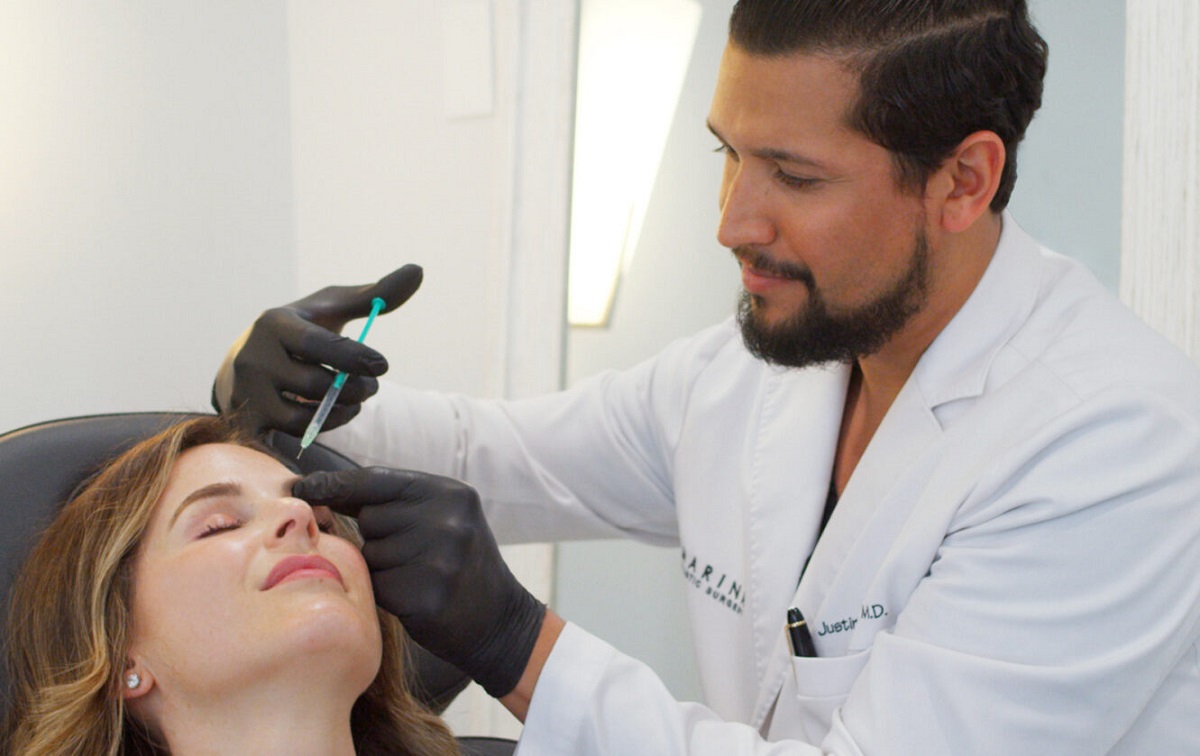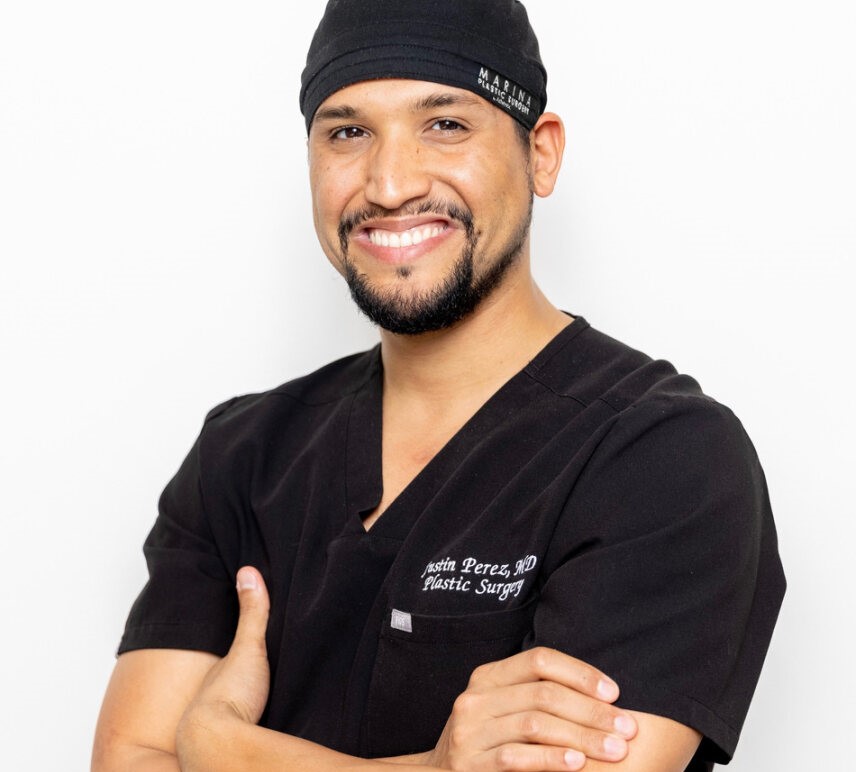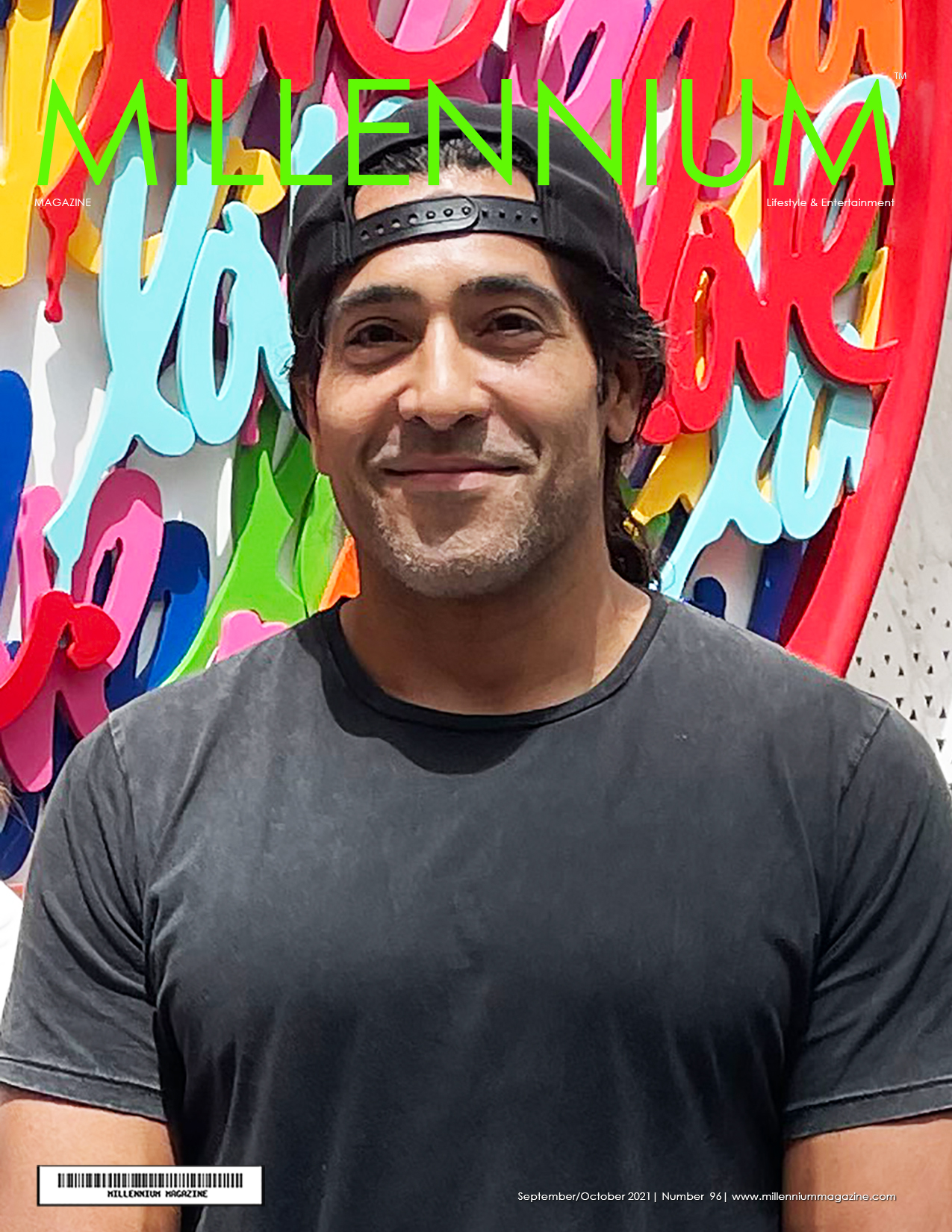
It was 2002 when the Botox brand name became available to the public as an elective cosmetic enhancement. In 2003, the first hyaluronic acid filler became available for use on the general public.
A lot has changed in 20 years, not the least of which is the level of knowledge and proficiency of medical providers. Coupled with the relatively recent freedom from the secrecy and stigma that used to accompany elective procedures, the demand for non-surgical aesthetic procedures is constantly increasing.

Despite its acceptance and accessibility, mistakes, myths, and misjudgments are still commonplace. Whether it’s knowing which filler is used for what or how much is enough, When it comes to aesthetic procedures, a mistake can be devastating financially and psychologically.
Shedding invaluable light on these issues and more is Dr. Justin Perez MD, one of the nation’s most trusted plastic surgeons and the Medical Director of Marina Plastic Surgery by Athenix, Athenix is an elite group of advanced plastic surgery and aesthetic centers providing the latest surgical and non-surgical procedures from their six locations across California, Oregon, and Washington, with a seventh center in Arizona opening later this year. As a patient advocate, Dr. Perez sheds invaluable light on how to manage expectations when getting injections, his favorite new fillers on the market, and how to avoid the costly, and often unsightly, mistakes that we witness daily in our personal lives, on celebrities and social media.
While only plastic surgeons can perform actual surgery, injections, fillers, and laser treatments are offered at med spas, dermatology offices, and some day spas. Dr. Perez notes that getting non-surgical procedures and injections performed by a plastic surgeon adds a layer of expertise compared to other providers. Dr. Perez believes in complete transparency with patients, and that includes discussing surgical options, even if it’s not well into the client’s future. “I think it’s important to have that discussion at the beginning,” notes Perez. “Like anything else in life,” he continues, “your skin and face require maintenance. Sometimes the perception is that it’s a one-and-done fix. We start with lighter maintenance, but over time, that changes. I want to have that conversation early and I want the patient to think about it as they see their face age. I think it’s an easier way for someone to process the information.”

So how much is too much? How do you know when you are overdoing it or if you are choosing the correct method for the desired results? In his exclusive interview, Dr. Perez offers candid information on why the “too much work done” look is so common and how to avoid it, the most exciting new injectables on the market, and when it’s time to consider surgical options.
What is the cause of the over-the-top and over-injected look? We see it everywhere, even among celebrities who can afford the best providers.
It’s something that has caught many people’s attention and is getting a lot of press. There are a couple of ways we can dissect this -there is the over-filled face that could be the result of just injections like hyaluronic acid fillers or Sculptra. These can be done at a med spa with no downtime. The other culprit for a potentially overdone look is fat grafting, which is performed by a surgeon.
How do these go so disastrously wrong for some people?
For fillers, the danger comes when patients are potentially trying to avoid surgery, such as a face or neck lift. They are likely trying to correct sagging tissues with fillers, which are intended for subtle volume enhancement. That’s when you start to see an abnormal look, as fillers can only replace so much lost volume, and just adding more filler is not the solution. It becomes a slippery slope and some patients will shop around until they find a provider who will acquiesce to their request, even when it is not in their best interest. Overfilled lips, for example, can cause lymphatic obstruction and chronic swelling.
And what about fat grafting, how can that go wrong for a patient?
Fat grafting is a beautiful way to add volume to the face. I do it all the time for my facelifts. It does however require careful judgment and good taste. The most common mistakes tend to be either too much fat being injected — this can give a bloated, puffy appearance. Fat injected at the wrong depth – if the fat is too superficial in the face it can be visible. There are special techniques that I use to make the fat more “blended” so that we can avoid this. And finally, overly aggressive fat grafting in young aesthetic patients- these patients are prone to weight fluctuations though out their lives (pregnancy, menopause, etc). The grafted fat will grow and shrink just like our normal body fat, so we have to be careful. There is much less of a risk of this happening in older patients. That being said, meticulous fat grafting to the face can be stunning and really transformative for patients!
What are other examples of misguided procedures?
The under-eye area is a good example. We have many young patients that come in with under-eye shadows. It is imperative to select the appropriate filler, in this case. The wrong filler or inappropriate amount can cause lymphedema, which causes chronic puffiness and an unwanted over-filled appearance. The point is that these issues can be caused by damage to the skin’s underlying structure. Once that happens, it’s very difficult to fix and may be irreversible. I am always honest with patients about what is and isn’t possible, even knowing the patient may go elsewhere.
How does one know when injections or dermal fillers will no longer be effective or provide optimum results?
When tissue starts to sag or there is extra or loose skin. Let’s go from top to bottom starting with the upper eyelid. When there is skin you can pinch, sure we can use Botox or fillers to lift the brow or temples, but once that skin gets too heavy, it’s not enough. Same with under-eye hollows. We can try fillers once or twice, but if the hollows persist, we need to discuss an eye lift. And once you get those deep wrinkles, smoker’s lines, or jowls you can pinch, then filler just acts as a temporary band-aid. It will soften it, but not fully correct it.
Can we talk about some of the new injectables and fillers you are excited about? Let’s start with Daxxify.
I’m really jazzed about this. We had early access to it. We are one of the first premiere practices to have it and are training others on how to use it. Besides treating dynamic wrinkles, it hydrates the skin and tissue and adds elasticity. Compared to other neurotoxins, the duration is better -six to nine months instead of two to four. It gives the skin a really nice glow, too. It can also be applied topically with micro-needling to improve skin quality and hydration, or it can be added to laser or exosome treatments for added benefit and recovery. I like to get creative and tailor things to a patient’s specific needs. I think that’s one of the fun aspects of the non-surgical space, it’s safe to mix and match treatments.
What about the new Juvederm Volux for the jawline? Are you seeing good results with this?
The results are excellent. I would say it’s for anyone who wants jawline definition that does not have significant skin laxity. It may even cater more toward males or those who like a stronger lower third of the face and a chiseled jawline. It’s a really effective treatment and there was definitely a gap in the market for it. It’s specifically designed to go on the bone in the jaw alignment and can last over a year with impressive results. The caveat is that you may need up to five syringes to achieve the appropriate amount of volume because it goes deep into the bone. Now, if someone comes in and has excessive skin laxity and platysma bands around the neck, then Volux is not the answer. Also, keep in mind we must repeat the injections every year to maintain the results.
To book a consultation with Dr. Justin Perez and learn more about the services offered, visit www.marinaplasticsurgery.com or www.athenixbody.com.

About Dr. Justin Perez MD
Dr. Justin Perez is a board-certified plastic surgeon and the Medical Director of Marina Plastic Surgery by Athenix, a leading plastic surgery and medical spa destination serving Marina del Rey, Beverly Hills, and the greater Los Angeles market, with patients visiting from all over the world. He is one of the aesthetic fellowship directors for the USC-Marina Aesthetic Surgery Fellowship and has served as a principal investigator for clinical studies that have brought new aesthetic devices to market. He is a leading partner within the industry, providing cutting-edge surgical and non-surgical treatments to his patients. Dr. Perez received his training at the number one aesthetic fellowship in the country. He also trained at UT Southwestern Medical Center — world-renowned for its research, regarded among the best in the country for medical education and for clinical and scientific training, and nationally recognized for the quality of care its faculty provides to patients at UT Southwestern’s University Hospital & Clinics and affiliated institutions. He is Ivy League educated and completed his medical school training at Weill Cornell Medical College in New York City. Dr. Perez has authored multiple peer-reviewed publications on aesthetic surgery including the Plastic and Reconstructive Surgery Journal, as well as multiple book chapters on aesthetic surgery techniques. He is trained in complex facial and breast aesthetics including revisionary procedures. He takes a tailored approach to each patient’s aesthetic goals and is passionate about making sure that his patients are the star of the show.

























